The wild grapes are starting to plump out. As near as I can figure, they are the species Vitus riparia, also known as the river grape or frost grape. The fruit turns blue or purple as it ripens. This species is native to Iowa.
Riverbank grape is a translation of the scientific name Vitis riparia; rīpārius means "of riverbanks" in Latin, deriving from rīpa "riverbank".
My friend Laura Belin has a regular feature called “Wildflower Wednesdays” on her website, Bleeding Heartland, and in 2021, she posted a nice column on our river grapes. Her reference reports “berries are often sour until after a frost, then turn more sweet-tart.” Hence the name “frost grape.”
This plant isn’t by a river. Instead, it is on a fence row bordering Cedar Bluffs. I do see the grapes along the Cedar River and next to the pond. I can’t resist eating a few on my walk when they are ripe.
They are smaller than the domesticated grapes we buy in stores, are more sour, and most only have one or two seeds. Domestication favored sweeter and larger grapes with more seeds.
The domesticated grapevine (Vitis vinifera L.) belongs together with about another 70 species to the Vitis genus and being one of the oldest and extensively cultivated fruit crops is a fascinating subject for evolutionary studies. Archaeological data suggest that domestication of the grapevine began 6,000–8,000 years ago in the Transcaucasian region, between the Black Sea and Iran…
I take so many photos of flowers and seldom see the insects on them until I post the photos here or elsewhere. Note the beetle on this beautiful flower, center left.
It’s crazy frog season this year! The other day, I stepped into the crick and maybe half a dozen frogs exploded in every direction. One day, after a big rain right before dawn, I heard what sounded like thousands of frogs in a cornfield adjacent to Cedar Bluffs. I’ve never heard anything like it before!
Nearly every day for a week or so, Violet the Dog and I have encountered a rabbit on this section of the trail. It’s our habit at home to call all of our yard rabbits “Fred.” Since Violet the Dog and I are seeing this rabbit nearly every day, I have decided to call it “Florence.”
Watch the video, and you will see that Florence is clearly in control of the situation. I’ve posted about this before, but the white tails of many creatures, including rabbits, hares, and deer, signal that if a predator sees their white tails, they know that neither of them should waste their energy on a chase. It’s an evolutionary outcome that works for both predator and prey.
And Florence the Rabbit and Violet the Dog know it.
I often find bouquets on the trail. Some are in water bottles, some are placed where tree branches meet, others are on the overlook, but most are placed or tossed on the path. I call them “lost bouquets” because they are obviously on a mission to tell someone that they are loved.
And above is a different kind of bouquet, just for you.
Thanks for reading! Here are four of my favorite nature Substacks: Larry Stone’s “Listening to the Land,” Diane Porter’s My Gaia, Al Batt’s Al’s Substack, and Jaron Sedlock’s Jaron’s Curious Adventures. Please consider subscribing. All will entertain, educate, and soothe your soul.
I’m a member of the Iowa Writers Collaborative. Please sample the talents of my fellow collaborative members. If you can afford to be a paid subscriber, that would be great. If not, the vast majority of content is free.





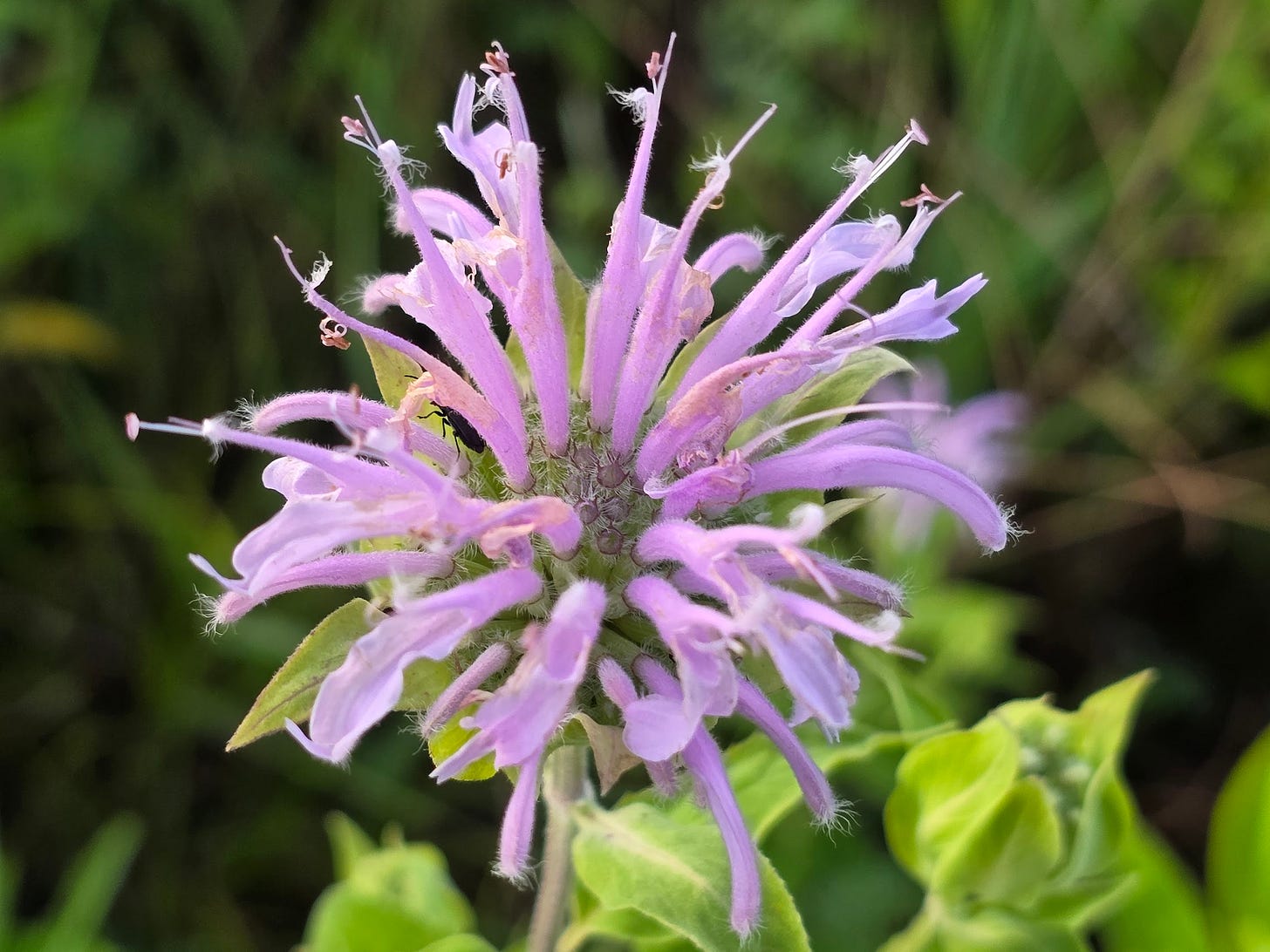
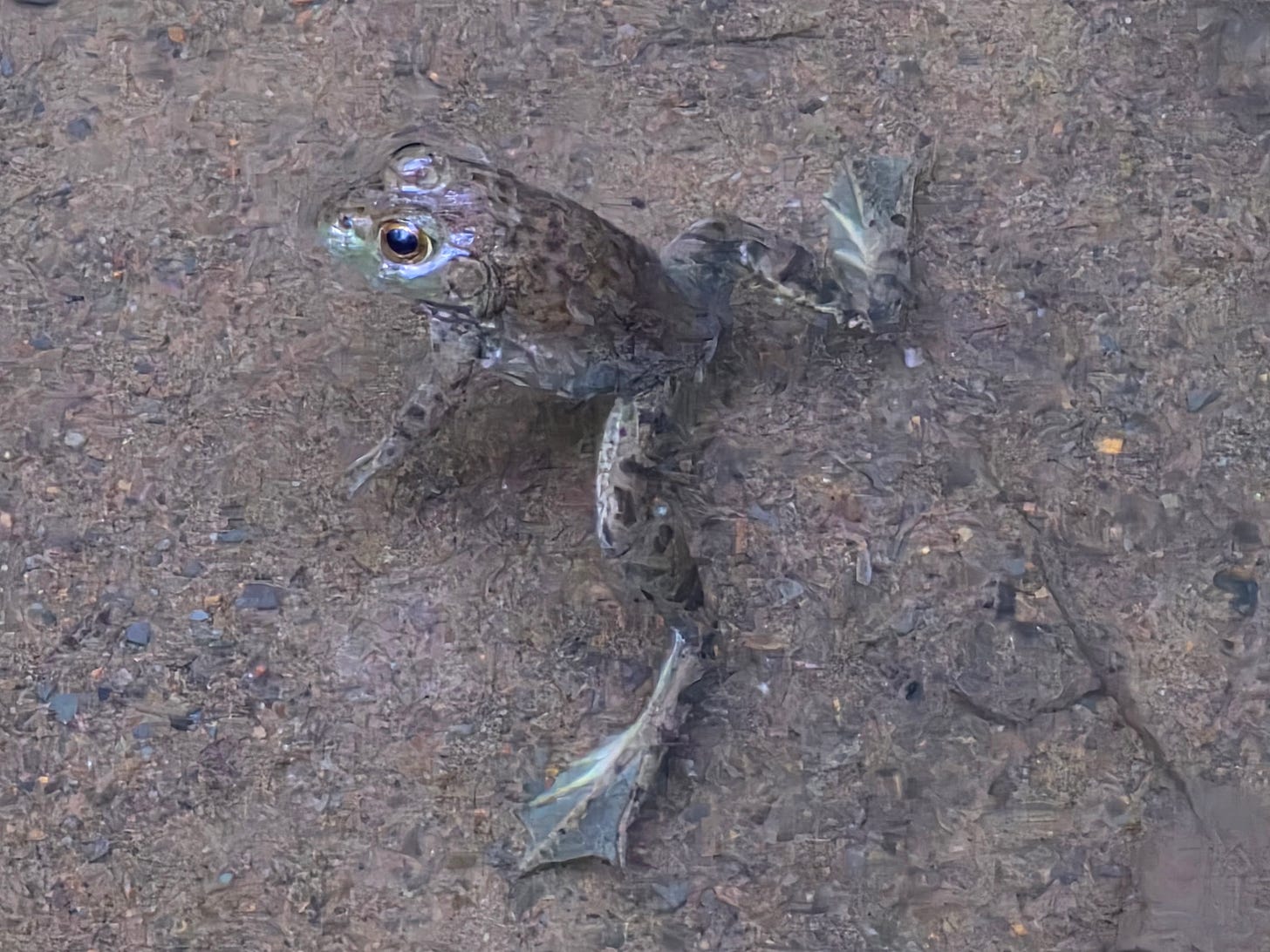
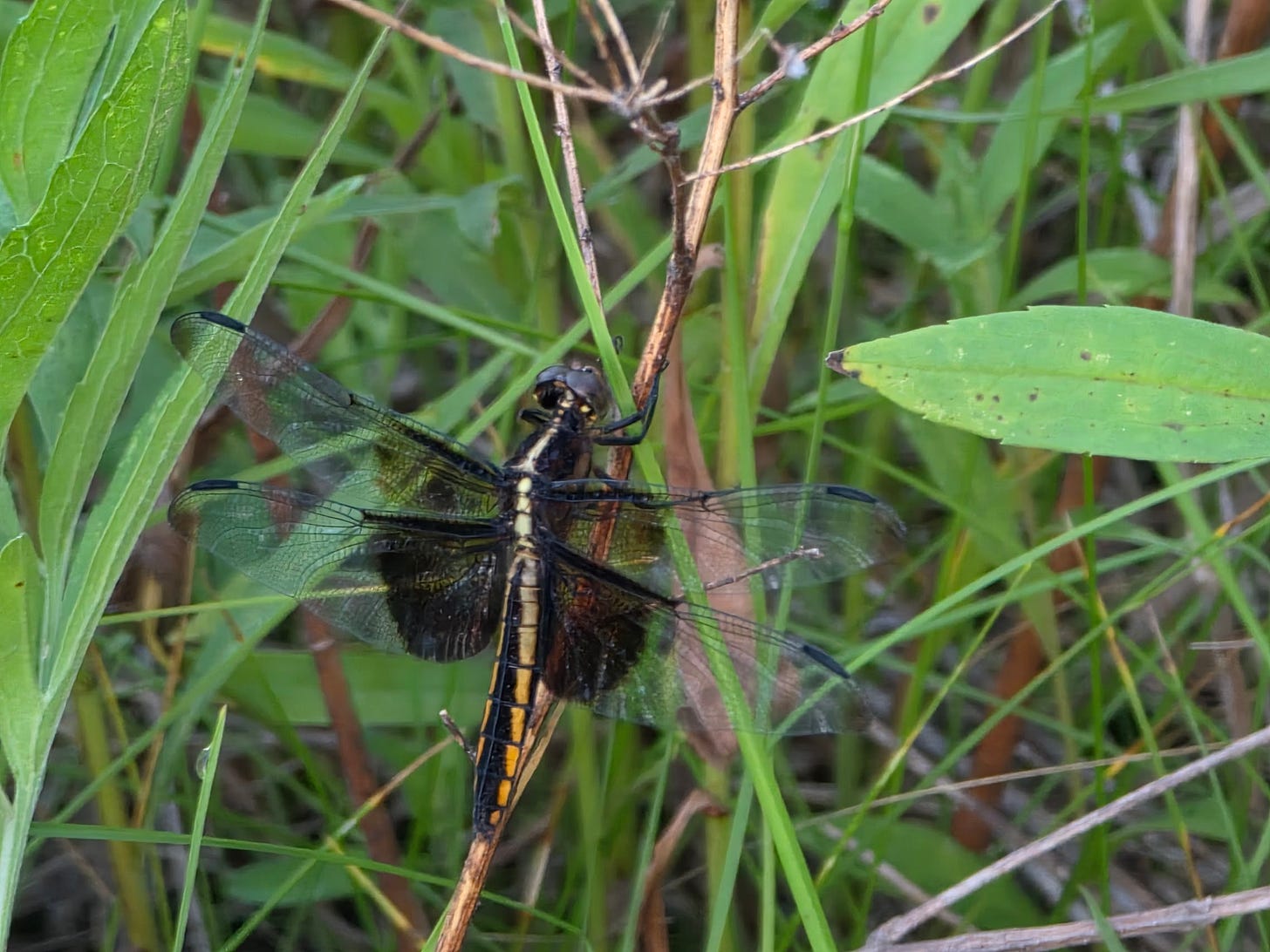
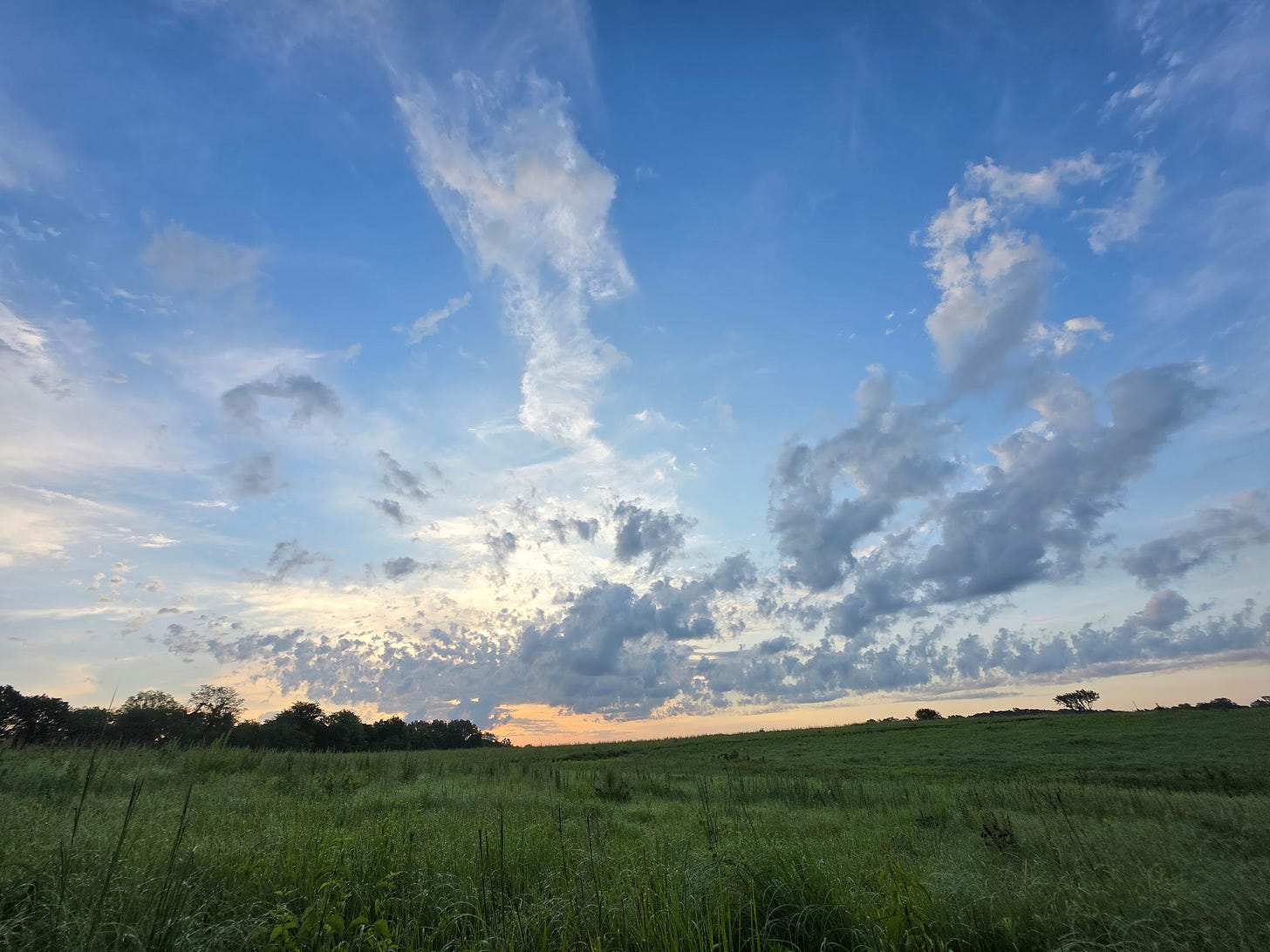
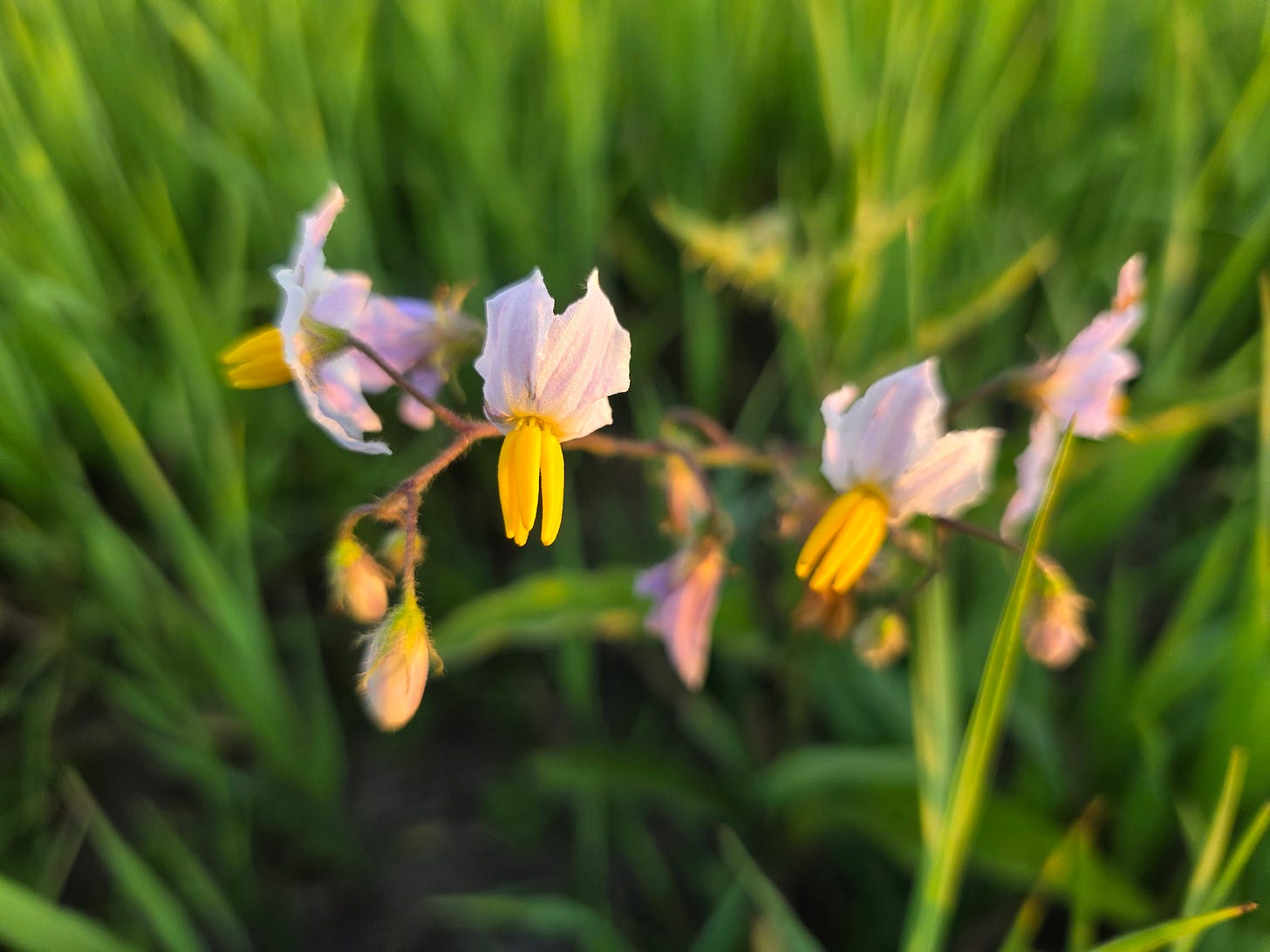

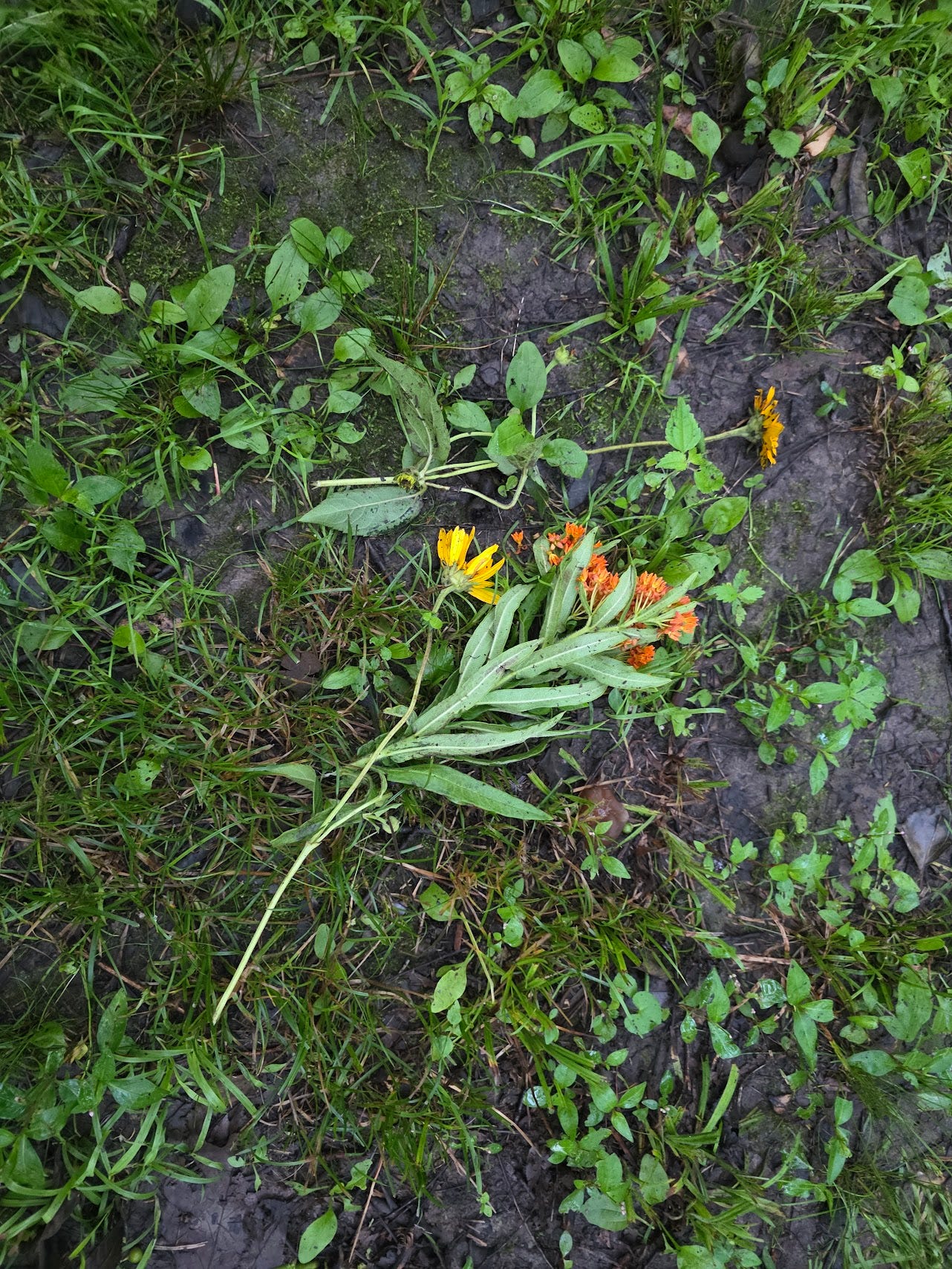

I recognize the first flower (with the beetle on it) as Bee Balm. The ones Marsha has in our garden are a deep red and the bees are always around and on them as long as they're blooming. She said another name for it is Bergamot and when I look that up, it appears this one might be Wild Bergamot, which makes sense to me.
Congratulations on your great fortune to see an abundance of frogs nearby! Frogs, salamanders and other amphibian creatures are “canaries in the coal mine” concerning contamination, as you know. And, have vanished from so many places I’ve enjoyed over the past couple decades. Oh, I miss them so. And, as always Robert, thank you for always sharing pictures from your world.